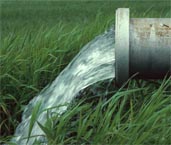New technique may improve clean-up efforts of contaminants in underground water
 Washington, Jan 31: A technique developed at the University of Toronto (U of T) provides a new way to monitor and improve the success of clean-up efforts of dangerous contaminants found in underground water.
Washington, Jan 31: A technique developed at the University of Toronto (U of T) provides a new way to monitor and improve the success of clean-up efforts of dangerous contaminants found in underground water.
Cleaning up dangerous contaminants, like, dry-cleaning fluids, solvents and petroleum hydrocarbons, found in underground water, presents one of the most urgent challenges facing environmental science.
"The most common method to clean-up groundwater is biodegradation - using microbes to consume the contaminants and break them down into more benign end products that are not harmful to the environment," said U of T geochemist Barbara Sherwood Lollar, the scientist who initiated the concept and goals for the EPA report and is one of its five international authors.
The report outlines how this can be done using a novel technique called Compound Specific Isotope Analysis, developed in U of T's Stable Isotope Laboratory.
The elements of carbon that form the basis for the hydrocarbon contaminants actually come in two types called isotopes, according to Sherwood Lollar.
"When microbes degrade contaminants, they prefer the lighter isotope carbon 12 over the heavier isotope carbon 13. The resulting change in the ratio of these isotopes in the contaminant itself is a dramatic and definitive indicator that the biodegradation is successfully taking place," she said.
Beginning in the 1990s, U of T''s Stable Isotope Laboratory has been an international pioneer in discovering how different carbon isotopes can be used to identify whether or not biodegradation is taking place.
"Today, dozens of students in Canada have been trained in this method, drawn in by the fascinating combination of fundamental research that has important applications such as the clean-up of drinking water," said Sherwood Lollar.
Over the past decade, as the new technique has become more widespread, centres for research and education - and even private companies - have blossomed worldwide.
According to Sherwood Lollar, "Much of the research on new methods of analyzing groundwater contamination has been published in scientific and professional journals but this report - written specifically for the practitioners in accessible language with clear procedural information and decision-making strategies - is a milestone."
"It is particularly gratifying to be able to take a technique out of the lab and to put it into the hands of the people working on this issue every day around the world," she added. (ANI)